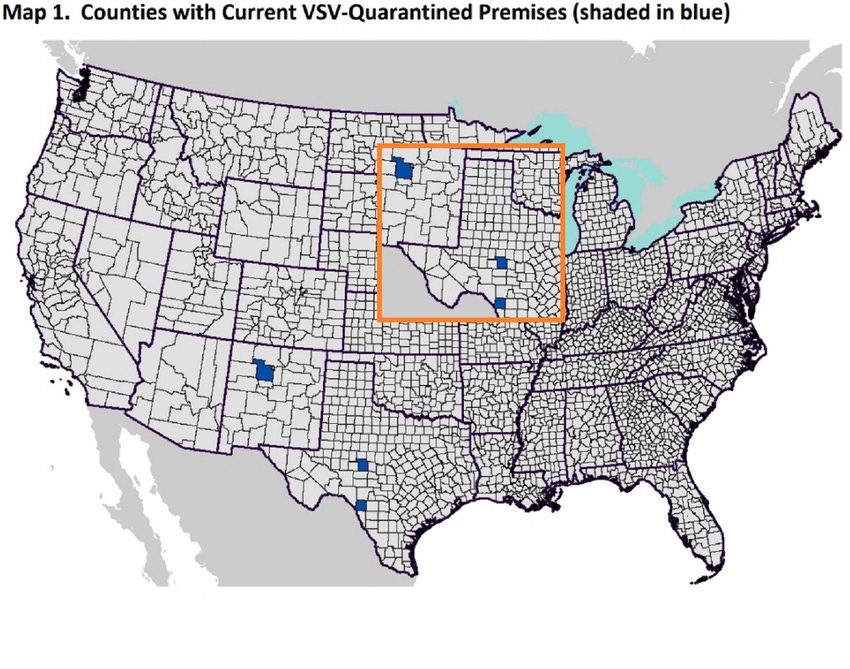
Vesicular stomatitis virus (VSV) has been confirmed in New Mexico and Texas in the past few days.
USDA says on June 26 the National Veterinary Services Laboratories (NVSL) in Ames, Iowa, confirmed a finding of vesicular stomatitis virus (VSV) infection (Indiana serotype) on a premises in Sandoval County, New Mexico.
The agency says two horses on the premises have met the case definition of infection with compatible clinical signs and positive complement fixation test (CFT) titers at a greater than 1:40 dilution, indicating recent infection. Both horses are also polymerase chain reaction (PCR)-positive for VSV (Indiana serotype) on swabs collected from the lesions.
This is the 2019 VSV index case for New Mexico. The VSV index premises for New Mexico is a boarding facility with 17 horses, seven llamas, and two goats. USDA says the two horses confirmed as VSV-infected reside in a pasture together and have no recent history of movements from the premises. There are no other animals at the facility currently showing clinical signs of VSV. The facility is under state quarantine and will remain so until at least 14 days from the onset of lesions in the last affected animal on the premises.
On June 21 the Indian serotype VSV was confirmed in horses in Kinney County, Texas, by the Texas Animal Health Commission. On June 24 VSV was confirmed in a horse in Tom Green County, Texas.
The Texas events prompted the Colorado State Veterinarian's Office to issue a warning to livestock owners in that state on June 25. The state vet's office says a VSV outbreak in 2014 and 2015 in Colorado resulted in several hundred quarantines and movement restrictions involving horses and cattle. Management of the disease is aimed at effective control while minimizing the negative economic impacts to livestock owners.
According to the Merck Veterinary Manual online, VSV is seen sporadically in the US. Outbreaks historically occurred in all regions of the country but since the 1980s have been limited to western states and occur seasonally, usually May through October. Examples would be 1995, 1997, 1998, 2004, 2005, 2006, 2009, 2010, and 2012. It says the largest outbreak in the past decade occurred in 2005 and affected nine states.
The Merck manual says VSV can be transmitted through direct contact with infected animals with lesions or by blood-feeding insects. In the southwestern USA, black flies are the most likely biologic insect vector. In endemic areas, sand flies are proven biologic vectors. Other insects may act as mechanical vectors. Exposure to insects that carry the virus is often associated with nearby moving water sources such as creeks or rivers or irrigation of pastures.
About the Author(s)
You May Also Like




